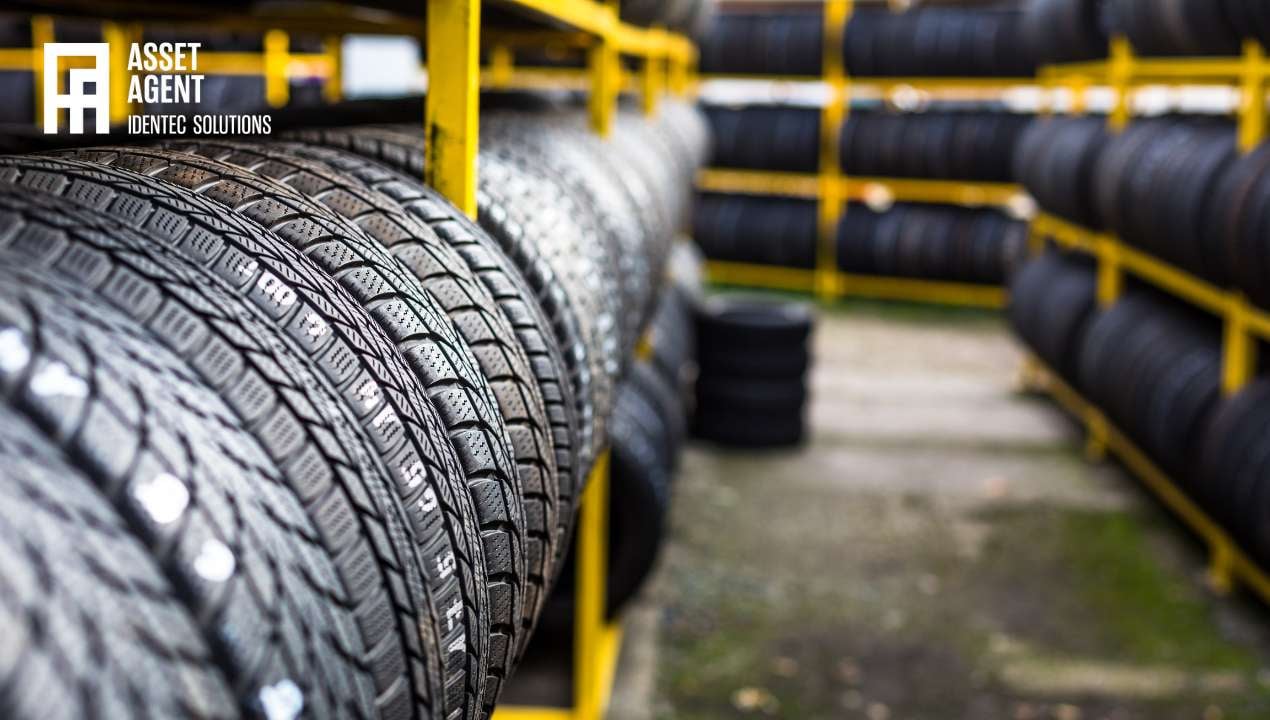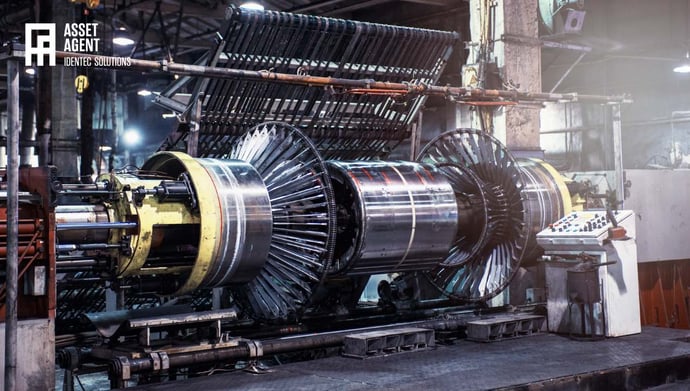Green Tire Manufacturing: Embracing Sustainable Solutions
| Written by Mark Buzinkay
As the urgency to combat climate change and promote sustainable practices grows, industries worldwide are embracing the concept of green manufacturing. The tire manufacturing sector, a significant contributor to environmental pollution, has recognised the need for transformative changes to ensure a greener future. In this article, we will explore the challenges faced by the industry and delve into innovative solutions that address key aspects of sustainable tire manufacturing.
With a focus on the goals of the Tire Industry Project (TIP), strategies to improve end-of-life tire management, techniques to enhance productivity, and waste reduction measures, this article aims to provide plant directors and sustainability officers with valuable insights into the journey towards a greener tire manufacturing industry.

No video selected
Select a video type in the sidebar.
The Tire Industry Project (TIP) and Its Goals
The Tire Industry Project (TIP) is a global initiative led by the World Business Council for Sustainable Development (WBCSD) that brings together tire manufacturing companies to address environmental and social challenges within the industry. Established in 2005, TIP aims to promote sustainable practices and drive the transition towards greener tire manufacturing processes. By engaging stakeholders, conducting research, and implementing innovative solutions, TIP seeks to improve the overall sustainability performance of tire manufacturing.
Participating Companies: TIP comprises major tire manufacturing companies from around the world, including industry leaders such as Bridgestone, Continental, Goodyear, Michelin, and Pirelli. These companies have recognised the need for collective action and collaboration to tackle sustainability challenges in tire manufacturing.
Goals of the Tire Industry Project:
The primary objectives of TIP are centred around three key areas:
- Product Stewardship: TIP aims to improve tires' environmental and social performance throughout their life cycle. This includes promoting sustainable sourcing of raw materials, reducing the environmental impact of tire manufacturing processes, and advancing sustainable design principles.
- Environmental Performance: TIP strives to reduce the environmental footprint of tire manufacturing by promoting energy efficiency, minimising emissions, and implementing waste reduction measures. The project encourages the adoption of cleaner production technologies and the optimisation of resource usage (read more about the sustainable supply chain model).
- Health and Safety: TIP focuses on enhancing worker health and safety standards within the tire manufacturing industry. This involves implementing best practices to ensure safe working conditions, promoting employee well-being, and providing necessary training and education.
Key Performance Indicators (KPIs)
TIP has established a set of KPIs to track progress and measure the impact of its initiatives. These KPIs are aligned with the United Nations Sustainable Development Goals (SDGs) and include metrics related to energy consumption, greenhouse gas emissions, water usage, waste generation, and occupational health and safety. By monitoring these KPIs, TIP aims to drive continuous improvement and accountability within the participating companies.
Status quo
Since its inception, TIP has made significant strides in promoting sustainable tire manufacturing practices. The project has facilitated collaboration among industry stakeholders, fostering the exchange of knowledge and best practices. TIP has conducted extensive research to identify environmental hotspots and develop innovative solutions.
Through TIP, participating companies have implemented various initiatives to improve their sustainability performance. These initiatives include the development of eco-friendly tire materials, the adoption of energy-efficient manufacturing processes, and the implementation of waste management strategies. TIP has also played a crucial role in raising awareness and promoting responsible tire disposal practices, aiming to reduce the environmental impact of end-of-life tires.
Moreover, TIP continues to engage with governments, academia, and other stakeholders to drive policy changes and create a conducive regulatory environment for sustainable tire manufacturing. [1].
Improving End-of-Life Tire Management
Effectively managing end-of-life tires (ELTs) is a critical aspect of sustainable tire manufacturing and plays a significant role in achieving environmental goals within the industry. However, if not handled properly, ELTs can pose significant environmental and health hazards. However, innovative solutions have been developed to address this challenge and promote responsible ELT management.
One of the key solutions to address the issue of ELTs is tire recycling. Recycling tires not only helps reduce waste but also provides an opportunity to create value-added products. One common method of tire recycling is the production of crumb rubber. Through this process, tires are shredded into small rubber particles known as crumb rubber. Crumb rubber can then be used in various applications, such as blending it with asphalt for road surfaces or incorporating it into sports surfaces like playgrounds and athletic tracks. Recycling ELTs into crumb rubber not only extends the lifespan of the tires but also contributes to resource conservation and reduces the demand for virgin materials [3].
Another approach to managing ELTs is through pyrolysis, a thermal decomposition process that converts tires into valuable products like fuel oil, carbon black, and steel. Pyrolysis offers a way to recover energy from ELTs while minimising their environmental impact. The recovered fuel oil can be used as an alternative energy source or refined for various purposes. At the same time, carbon black can be utilised as a raw material in the production of rubber and plastic products. Pyrolysis presents an effective method of ELT disposal, contributing to resource recovery and reducing reliance on fossil fuels.
In addition to recycling and pyrolysis, incorporating ELTs into construction materials has gained prominence as an innovative solution for managing end-of-life tires. For instance, ground rubber derived from ELTs can be used in the production of rubberised asphalt, which exhibits improved performance and durability compared to traditional asphalt. Furthermore, rubberised asphalt provides a sustainable way of utilising ELTs and offers benefits such as enhanced skid resistance, reduced road noise, and increased flexibility, resulting in longer-lasting road surfaces [3].
However, to ensure effective ELT management, it is crucial to develop robust collection systems and promote awareness among consumers about proper ELT disposal. Establishing efficient collection infrastructure, such as designated collection centres and tire take-back programs, facilitates the proper handling and recycling of ELTs. Effective collection systems help prevent illegal dumping or improper disposal of tires, which can lead to environmental contamination and pose fire hazards. Furthermore, raising awareness among consumers about the importance of responsible ELT disposal encourages them to participate in recycling initiatives and contributes to a more sustainable approach to tire management.
HOw Do you enhance Productivity in the Tire Manufacturing Process?
Enhancing productivity in the tire manufacturing process is a crucial aspect of sustainable tire manufacturing. Tire manufacturers can achieve higher production outputs by improving efficiency and optimising resource utilisation while minimising waste and reducing their environmental footprint. Several strategies and technologies can be employed to enhance productivity and drive continuous improvement in the tire manufacturing industry.
One key approach to enhancing productivity is the implementation of advanced automation technologies (read more about the future factory). Robotic tire production systems, for example, can significantly improve efficiency by automating repetitive and labour-intensive tasks. These systems can handle processes such as tire assembly, inspection, and quality control, reducing the reliance on manual labour and minimising the chances of human error. As a result, automation not only increases production speed but also improves product consistency and quality, leading to higher overall productivity [4].
Furthermore, the adoption of lean manufacturing principles can greatly contribute to productivity enhancement in the tire manufacturing process. Lean manufacturing focuses on eliminating waste and optimising the flow of materials and information. Implementing just-in-time (JIT) inventory management systems, for instance, helps reduce excess inventory and ensures that materials are available precisely when needed. By minimising inventory carrying costs and streamlining production, tire manufacturers can improve efficiency and resource utilisation, resulting in higher productivity [4].
Continuous process improvement is another vital element of enhancing productivity. Through the application of techniques such as Six Sigma or Total Productive Maintenance (TPM), manufacturers can identify and eliminate process inefficiencies, reduce downtime, and enhance overall equipment effectiveness (OEE). By monitoring key performance indicators and implementing data-driven decision-making, manufacturers can identify bottlenecks, optimise production schedules, and achieve higher levels of productivity and operational efficiency [4].
Incorporating digital technologies into the manufacturing process can also play a significant role in enhancing productivity. The Internet of Things (IoT), for example, enables the interconnection of machines, devices, and systems, facilitating real-time data collection and analysis. By leveraging IoT technology, tire manufacturers can monitor equipment performance, predict maintenance needs, and optimise production processes based on real-time insights. This proactive approach minimises downtime, maximises equipment utilisation, and improves productivity.
Artificial intelligence (AI) can also be employed to optimise tire manufacturing operations. AI algorithms can analyse large volumes of data to identify patterns and make predictions, enabling predictive maintenance and minimising the risk of unplanned downtime. AI-based systems can also optimise production parameters, such as temperature and pressure settings, to improve product quality and consistency. By harnessing the power of AI, tire manufacturers can achieve higher levels of productivity and efficiency.
How do you Reduce Waste in the Tire Production Process?
Waste reduction is a critical aspect of sustainable tire manufacturing, as the production process generates a significant amount of waste. One key approach to waste reduction in tire production is optimising material usage. This involves ensuring precise measurement and control of raw materials, such as rubber compounds and reinforcing materials, to minimise overuse or waste. Additionally, many materials used in the process have an expiry date. Therefore, it is crucial to handle inventory carefully and by the FIFO principle.
Adopting cleaner production technologies is another effective method for waste reduction. For example, implementing advanced tire-building technologies and optimising the curing process can minimise scrap tire production. These technologies enable precise control over the manufacturing process, resulting in better product quality and a reduction in the number of defective or rejected tires. By minimising scrap tire generation, manufacturers can reduce waste and improve overall production efficiency [2].
Implementing closed-loop manufacturing systems is another strategy for waste reduction in the tire production process. Closed-loop systems involve recycling and reusing waste materials generated during the manufacturing process. For instance, scrap tires or production waste can be recycled and used as raw materials for other applications, such as crumb rubber for sports surfaces or rubberised asphalt for road construction. By incorporating waste materials back into the manufacturing process or finding alternative uses, manufacturers can reduce waste and contribute to a circular economy [2].
Furthermore, implementing waste management practices, such as segregation and proper disposal of waste, is essential for minimising the environmental impact of tire production. By implementing efficient waste management systems, manufacturers can ensure that waste materials are handled responsibly and disposed of in compliance with environmental regulations. This reduces the potential for environmental pollution and promotes a more sustainable approach to waste management [2].
Takeaway
The journey towards green tire manufacturing presents both challenges and opportunities for the industry. By embracing the goals set forth by the Tire Industry Project (TIP), prioritising end-of-life tire management, enhancing productivity through technological advancements like RTLS, and reducing waste throughout the production process, the tire manufacturing sector can make significant strides towards sustainability.
Glossary
Overall Equipment Effectiveness (OEE) is a key performance metric used in manufacturing to assess how effectively equipment is utilized. It combines three components: availability (uptime), performance (speed efficiency), and quality (defect-free output). Expressed as a percentage, OEE identifies production losses and highlights areas for improvement. An OEE score of 100% means perfect production with no downtime, speed losses, or defects.(5)
Reference:
(1) Tire Industry Project (TIP), World Business Council for Sustainable Development, [Online]. Available: https://www.wbcsd.org/ [Accessed: May 2023].
(2) "Green Initiatives in the Tire Manufacturing Industry," Tire World Exports, [Online]. Available: https://www.tireworldexports.com/green-initiatives-in-the-tire-manufacturing-industry/. [Accessed: May 2023].
(3) "End-of-Life Tires (ELTs)," Tire Industry Project (TIP), World Business Council for Sustainable Development, [Online]. Available: https://www.wbcsd.org/Sector-Projects/Tire-Industry-Project/End-of-Life-Tires-ELTs. [Accessed: May 2023].
(4) M. I. Aranda, R. K. Singh Raman, and R. J. Colón Morales, "A review on the application of Lean Manufacturing principles in tire manufacturing processes," Polymer Bulletin, vol. 79, no. 12, pp. 6671-6693, 2022. [Online]. Available: https://link.springer.com/article/10.1007/s00289-022-04445-2. [Accessed: May 2023].
(5) Nakajima, S. (1988). Introduction to TPM: Total Productive Maintenance. Productivity Press.
Note: This article was updated on the 26th of March 2025

Author
Mark Buzinkay, Head of Marketing
Mark Buzinkay holds a PhD in Virtual Anthropology, a Master in Business Administration (Telecommunications Mgmt), a Master of Science in Information Management and a Master of Arts in History, Sociology and Philosophy. Mark spent most of his professional career developing and creating business ideas - from a marketing, organisational and process point of view. He is fascinated by the digital transformation of industries, especially manufacturing and logistics. Mark writes mainly about Industry 4.0, maritime logistics, process and change management, innovations onshore and offshore, and the digital transformation in general.





